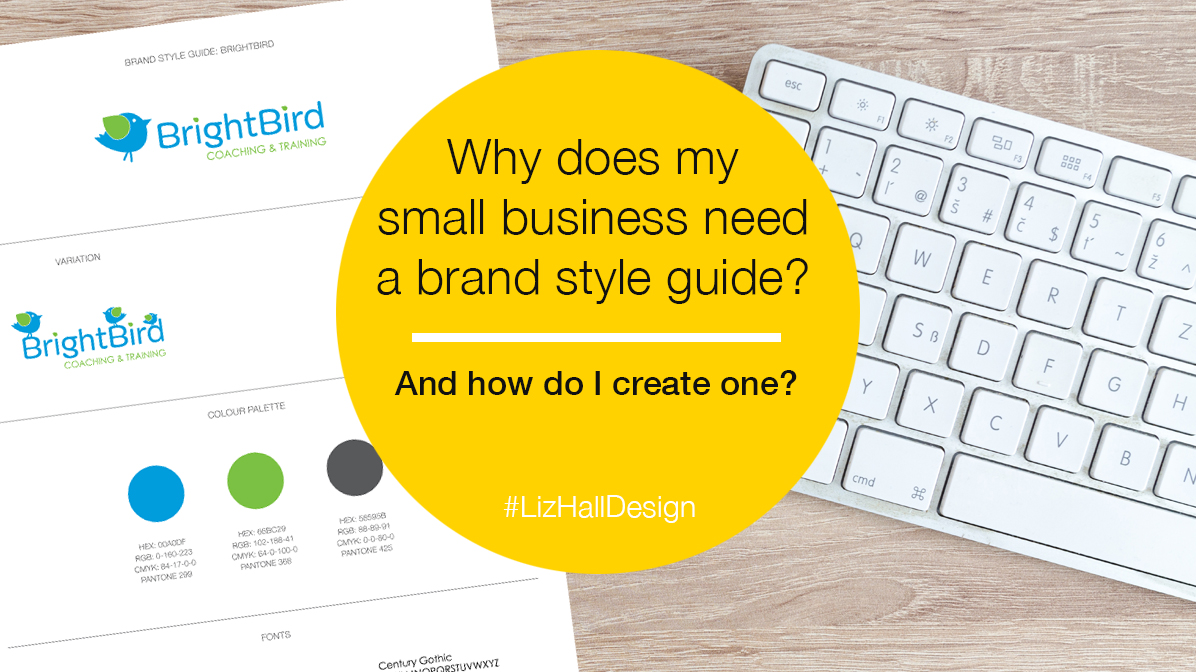You’re only a small business, you’re self employed, your desk is the kitchen table. So why on earth would you bother with brand guidelines? That’s just for big, corporate companies, isn’t it? Little old you doesn’t need fancy brand style guide.
Well, for a start, don’t knock your small business (Steve Jobs started in his parents garage). But more importantly, you have a brand whether you know it or not.
Your logo is the visual identity of your business, it’s how your customer recognises you. Your brand is how your customer feels about your business, and this encompasses every thing you do in print and online. So whether you’re bothered about branding or not, your customer is out there seeing and reading everything you put out there and forming an opinion.
Now, it’s starting to look more important. Good, because I’m going to help you put together some simple guidelines which you can refer to regularly (and update if you need to) and these will be the foundation of every contact you have with your customers, and your potential customers. They will help you create consistency making you more recognisable to your customers and help you stand out from your competitors.
Pick your logos
For this exercise I’m going to assume you already have a logo (if not, do get in touch for a chat). Pick the most up to date version of your logo and any alternate versions and put them in a folder on your computer. That way you’re always using the correct version and you’re not struggling to find it.
Different logo versions can include single colour, white out, alternate colours and straplines. Don’t forget the icon for use on social media. Make a note of when and how to use a particular logo version.
Create a colour palette
Your logo should ideally have no more than two or three colours at most. Find the RGB references and make a note of them on a document. You can add another two to three colours that complement your main logo colours and can be used along side. Now, every time you create a new document, use those RGB references. It might not seem a big thing but imagine if that Coca Cola red was sometimes slightly pink or a touch on the purple side. Colour tends to be the first and last thing that people remember about your logo.
Choose two fonts
Pick a font for your headers and a font for the paragraphs – again, make a note of them on your document. Your header font can be fancier but keep the paragraph font plain and easily readable. If your marketing is difficult to read, people won’t read it properly.
Each font has a character of its own so be sure to pick the right one to complement your business – use a serious font if you’re a serious accountant, use a quirky font if you have a modern, fun business. You get the idea.
Style your images
Images tend to be what people struggle with most, they can be an afterthought. But images are very, very important. We remember pictures more than words so even if you’ve spent ages writing your website or a leaflet, the wrong images might stop people even bothering to read. You don’t need a million different images either, a handful of good pictures that complement your logo and business are better than 20 stock photos.
Create a Pinterest board and pin pictures that reflect your business – it’s a great reference to help you if you eventually commission photography or if you use stock photography.
Take a look at my Pinterest board to get some ideas.
Think about your writing style
Your writing style is just as important as images when connecting with your customer and it has to complement the rest of your branding. It’s important to have a consistent voice whether friendly, formal, enthusiastic – whatever your business personality is.
Take a look at a few different pieces of marketing (website, social media posts, blog, leaflet) and see if your style is consistent. Make a note of suitable words, phrases and straplines to use.
Who is your super customer?
This should really be at the top of the list but it’s a good exercise to look at what you do already then see if it matches up to your super customer. Your logo, imagery and wording should all appeal to your super customer and if they don’t then it doesn’t matter how much time you spend on your marketing, they won’t notice you or buy from you. Your visual identity is your customers first encounter with your business so you have to create the right impression.
On their own, each visual element might not seem so important, but together they blend to create your brand and help you become consistent and recognisable. And it makes your marketing so much simpler and easier.
So there you have your brand guidelines, I told you it would be painless!
Keep them to hand, share with employees or give to your VA. Refer to them regularly to make sure that your print, social media and website all look consistent.
Download my brand style guide to help you get started.
Liz x



Thank you, great resource! I need to start the Pinterest board 🙂
As if we need a reason to start a new Pinterest board! Look forward to seeing the images 🙂
Thankyou, some thought provoking ideas there to consider, appreciate the info!
Glad you’ve found it useful, I really hope it helps you 🙂